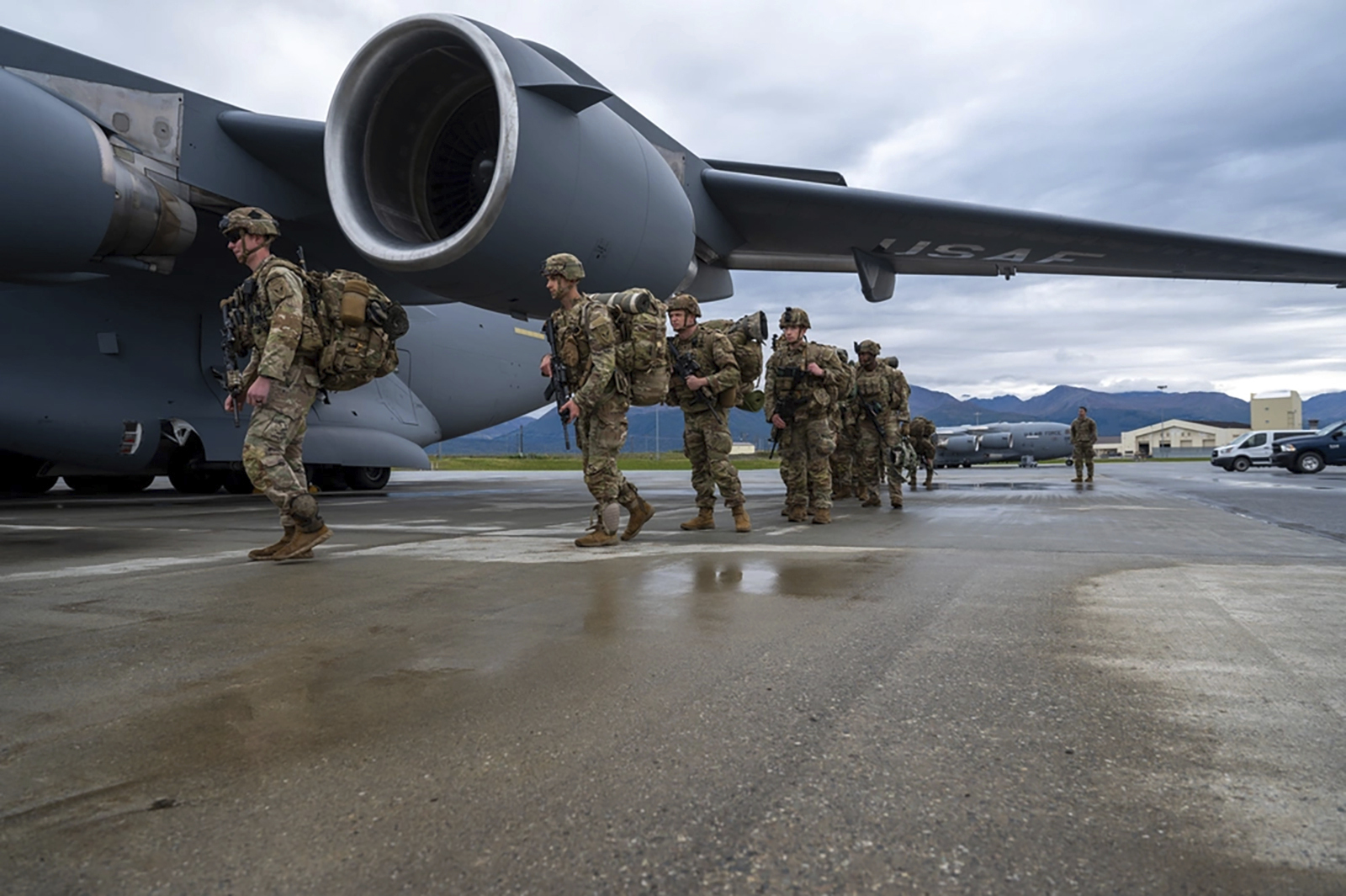The U.S. military has moved about 130 soldiers to Shemya Island in Alaska’s Aleutian chain.
The deployment comes in response to a recent surge in Russian military activity near U.S. territory. Russian planes and vessels have been approaching Alaska, though none breached U.S. airspace.
In the past week, eight Russian military aircraft and four naval vessels, including two submarines, were detected near Alaska. The increased activity is linked to joint military exercises between Russia and China, known as Ocean-24, which began on September 10.
Airman 1st Class Hunter Hites/U.S Air Force/AP Photo
Despite the uptick, Pentagon spokesperson Major General Pat Ryder said there is no immediate cause for concern.
“It’s not the first time that we’ve seen the Russians and the Chinese flying, you know, in the vicinity,” Ryder said. “That’s something that we obviously closely monitor, and it’s also something that we’re prepared to respond to.”
On September 12, the U.S. Army sent soldiers to Shemya Island as part of a “force projection operation.” The troops brought two High Mobility Artillery Rocket Systems (HIMARS) to the island, which is 1,200 miles southwest of Anchorage. Shemya Island is home to a U.S. Air Force station, established during World War II, and is considered a key strategic point.
Senator Dan Sullivan, an Alaska Republican, said the military also deployed a guided missile destroyer and a Coast Guard vessel to western Alaska. The move coincides with the Russian-Chinese military drills in the Pacific and Arctic regions.
The North American Aerospace Defense Command (NORAD) reported that Russian military planes were detected in the Alaska Air Defense Identification Zone (ADIZ) on September 11, 13, 14 and 15. The ADIZ is outside U.S. airspace but requires aircraft to identify themselves.
These types of incursions have been monitored for years. NORAD said that, on average, there are six to seven intercepts per year. In 2022, 26 Russian planes were detected in the Alaska zone. So far this year, the number has already reached 25.

U.S Coast Guard/AP Photo
The U.S. Coast Guard also tracked four Russian naval vessels near Alaska. The ships crossed into U.S. waters to avoid sea ice, which is allowed under international rules. Encounters like this have become more frequent in recent years.
Two years ago, a U.S. Coast Guard ship came across three Chinese and four Russian naval vessels near Alaska’s Kiska Island. Such incidents reflect growing Russian and Chinese military activity in the region.
Sullivan has called for a stronger U.S. military presence in the Aleutian Islands. He said the recent increase in activity highlights the Arctic’s role in the power competition between the U.S., Russia and China. He also urged the reopening of the Naval Air Facility Adak, which was closed in 1997.
While the rise in Russian and Chinese activity is being watched closely, Ryder said it does not currently pose a direct threat to the U.S.
This article includes reporting from The Associated Press.
